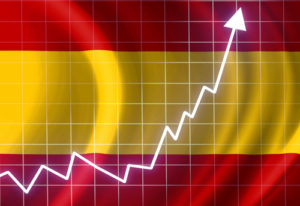
What a day of sport yesterday which is being dubbed as the Spanish Double. Alcaraz beat Djokovic in straight sets in the men’s Wimbledon final, defending his title. He is now a four-time grand slam winner at 21. Then there was the men’s Euros final, no doubt you all know the result of that…Spain played consistently well throughout the tournament, England I would say hasn’t played great during the tournament, until the semi-final and the final.
Spain’s stock market has done well this year too. The IBEX 35 is up 14.2% year-to-date (YTD) as at the end of last week, vs the UK 100 at 9.1%. Actually, since the tournament started it is up 2.7% vs the UK at 1.4%. It is even beating the Eurostoxx 50 which is up 13% YTD. It’s a pretty consistent long-term performer too, since the last men’s tournament the IBEX is up over 76%, Eurostoxx is up just over 70.6% and the UK 100 is only up just 56.2%. For reference the CAC 40 is up 72.5%, S&P is up 86.6% and MSCI World is up 77.9% in the last 4 years.
The IBEX index is quite concentrated in banks with 6 stocks totalling 32.4% of the index. Banco Santander is 13.2% of the index alone and is up 18% since the beginning of January. Inditex is also 15.1% of the index, which is basically Zara, and is up 19% since the beginning of the year. The Petrol and Power sector is 17.3% of the index (5 stocks), mainly in Iberdrola at 13% but is up less than 1% since the start of the year.
The UK 100 is a little more diversified with banks totalling 8% of the index and energy sitting at close to 12.4%. Shell is 8.7% of the index and is generally undervalued by the market vs its competitors like Exxon in the US, where Shell trades on a forward price-to-earnings (p/e) of 8.5x and, Exxon trades on 11.6x – a 36% premium.
Forward p/es show the UK (11.6x) and Europe (13.3x) look cheap relative to the US (23.2x). There are a few potential explanations for this. The dominance of a small number of growth stocks in the US, the potential effect of AI on productivity for example. Instability in Europe and the UK, caused by wars and Brexit are other possibilities.
But both the UK and Europe look significantly cheap vs their longer-term averages and vs the US over the longer term. This means that a number of specific large cap UK and European stocks trade on discounts to their US equivalents. These larger cap stocks usually generate revenue globally and so the underlying exposure is similar, but the UK or European listing seems to drive a lower valuation.
Some fund managers find it hard to justify paying the premium for the US business and are looking to Europe for opportunities. We saw a US fund last week and the vehicle allows them to invest up to 20% outside the US, it is only at 5% currently. They have four European holdings in ADRs, all healthcare stocks as they see more attractive valuations for those businesses than for the US equivalents. I took the four fund holdings and the average 2025 p/e is 11.9x vs the top 5 US pharma stocks (minus the one the fund actually holds) and the average 2025 p/e came out at 20x.
We often see UK and European funds take advantage of rules around overseas holdings to buy for example Microsoft, or Mastercard and Visa in the US, where there are no direct European equivalents but it is rare to see US investors doing the reverse.
There are some outliers in the healthcare sector at the moment mainly due to the rise in demand for GLP-1 drugs, which is a new weight loss drug used for people with diabetes. The two market leaders are Novo Nordisk (Denmark) and Eli Lilly (US), which trade on a forward p/e of 40x and 49x respectively.
It is interesting to see the variation in performance across Europe, with the UK still lagging and cheaper valuations. Cheaper valuations can mean more opportunity, especially in well established businesses that do perform well and distribute strong dividends.
There is still plenty of potential opportunity in Europe too. There is general feeling of risk in the current concentration of high weightings in the US and the magnificent-7 (now moving towards a fab-5) in both the MSCI World and S&P 500. We would expect these valuation differentials to mean revert over time. Diversification and valuation remain central to a balanced portfolio, and there is still a chance the UK (England) can beat Spain at something this year…
Emily Cave – Research Analyst

FPC24192
All charts and data sourced from FactSet
Hawksmoor Investment Management Limited is authorised and regulated by the Financial Conduct Authority (www.fca.org.uk) with its registered office at 2nd Floor Stratus House, Emperor Way, Exeter Business Park, Exeter, Devon EX1 3QS. This document does not constitute an offer or invitation to any person in respect of the securities or funds described, nor should its content be interpreted as investment or tax advice for which you should consult your independent financial adviser and or accountant. The information and opinions it contains have been compiled or arrived at from sources believed to be reliable at the time and are given in good faith, but no representation is made as to their accuracy, completeness or correctness. The editorial content is the personal opinion of Emily Cave, Trainee Research Analyst. Other opinions expressed in this document, whether in general or both on the performance of individual securities and in a wider economic context, represent the views of Hawksmoor at the time of preparation and may be subject to change. Past performance is not a guide to future performance. The value of an investment and any income from it can fall as well as rise as a result of market and currency fluctuations. You may not get back the amount you originally invested. Currency exchange rates may affect the value of investments.
